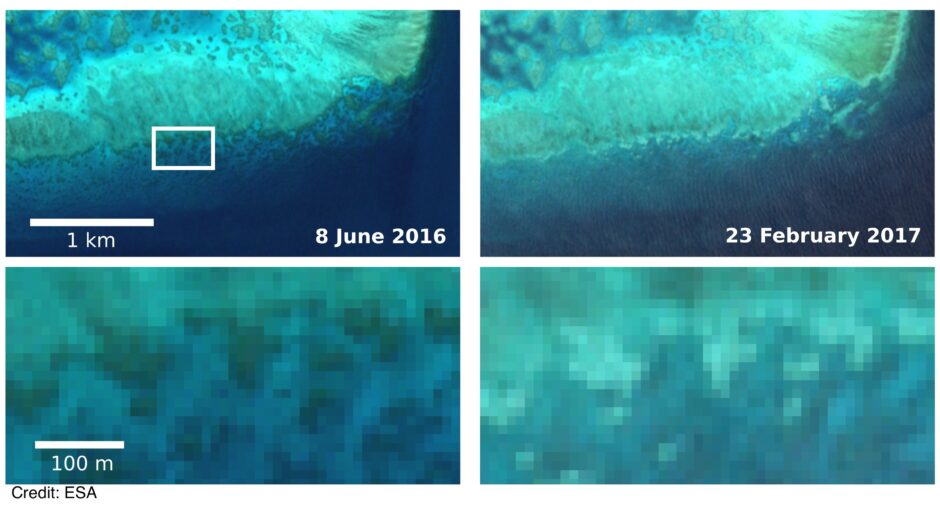Ocean Temperature
Ocean temperature changes
In the past 50 years, oceans have absorbed over 90% of the extra heat from greenhouse gases. Satellite monitoring of sea surface temperatures is crucial for understanding this heat’s impact, as well as allowing scientists to see how warmer and colder areas of the ocean interact with each other. Monitoring of naturally occurring climate patterns like the ocean warming El Nino can be done from space, alongside longer-term global warming.
A slight temperature increase can have severe impacts on aquatic life. Warmer water holds less dissolved oxygen than cold water, impacting organisms that need oxygen to survive. Coral reefs are especially vulnerable to temperature changes, leading to coral bleaching, which can kill corals and destroy these crucial habitats.

El Niño and La Niña
The two phenomena are climate patterns characterized by fluctuations in ocean temperatures in the central and eastern Pacific Ocean. El Niño occurs when sea surface temperatures are warmer than average, releasing more heat into the atmosphere. La Niña is the opposite, marked by cooler-than-average sea surface temperatures.
El Niño typically brings warmer, wetter conditions to the Americas and drier, cooler conditions to Asia and Australia. In contrast, La Niña generally results in cooler, drier conditions in the Americas and wetter, stormier weather in Asia and Australia.
Links to further information:
ESA – Our oceans are in hot water
